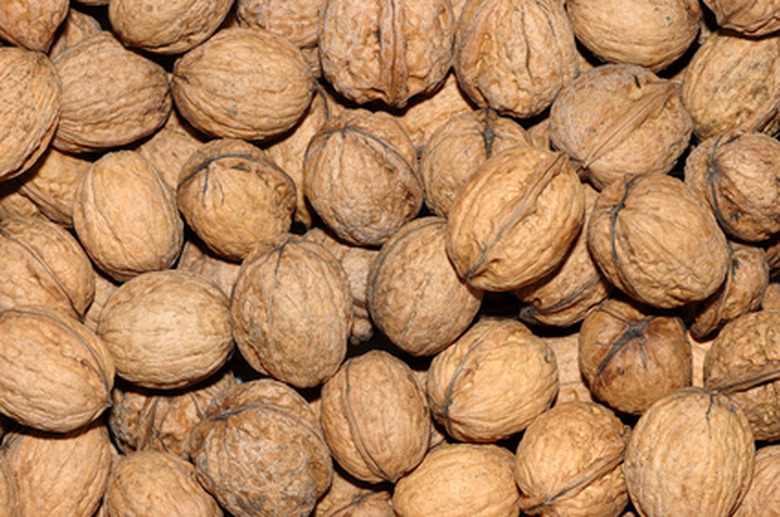What Types Of Trees Kill Out The Grass?
Trees and lawn are two fundamental features of the home landscape, yet many trees are not compatible with growing turf grasses nearby. Some types of trees kill off nearby grass chemically, due to toxins in their bark and leaves. Other trees may have dense networks of shallow roots, which compete with grass for water and nutrients. Any tree that casts heavy shade will also spell doom for most lawn grass.
Walnut
Black walnut trees (Juglans spp.) and their close relatives like butternut contain a chemical called juglone, which inhibits the growth of many other plant species. The Utah State University Extension advises that lawn grass and many common ground covers will not grow under walnut trees. The Utah Extension suggests that a thick layer of organic mulch like bark chips is the best option for preventing soil erosion and moderating soil temperature under and around walnut trees, as efforts to maintain lawn grass or living ground covers under these trees is likely to be fruitless. Walnut leaves, twigs and bark should also not be used in compost, as this may also kill off other plants when it is spread in growing areas.
- Trees and lawn are two fundamental features of the home landscape, yet many trees are not compatible with growing turf grasses nearby.
- The Utah Extension suggests that a thick layer of organic mulch like bark chips is the best option for preventing soil erosion and moderating soil temperature under and around walnut trees, as efforts to maintain lawn grass or living ground covers under these trees is likely to be fruitless.
American Beech
The American beech (Fagus grandifolia) is a grand tree indeed, with smooth silvery-gray bark, crisply ridged foliage, and a huge, spreading habit. Lower branches are often parallel to the ground, making for a perfect limb from which to hang a backyard swing. The Virginia Cooperative Extension notes this beautiful tree's one detraction is that it is very shallow-rooted, growing a prolific network of interwoven roots along the surface of the ground, making it virtually impossible for grass to grow near the tree. The roots also make lawn-mowing impossible.
Dense Shade Trees
The University of Minnesota Extension notes that no lawn can grow for long in dense shade. Trees that cast heavy shade, especially year-round–such as hemlocks, spruces, and other thick conifers–will kill out the grass beneath their limbs and in the patches of shade they cast. The Minnesota Extension suggests cutting off lower branches, thinning the trees and planting the most shade-tolerant grass seed mixtures you can find appropriate for growing in your area. Dropped needles on dense conifers will also build up into a grass-eliminating mulch; rake up the needles if you want the grass to continue growing.
- The American beech (Fagus grandifolia) is a grand tree indeed, with smooth silvery-gray bark, crisply ridged foliage, and a huge, spreading habit.
- The Virginia Cooperative Extension notes this beautiful tree's one detraction is that it is very shallow-rooted, growing a prolific network of interwoven roots along the surface of the ground, making it virtually impossible for grass to grow near the tree.
